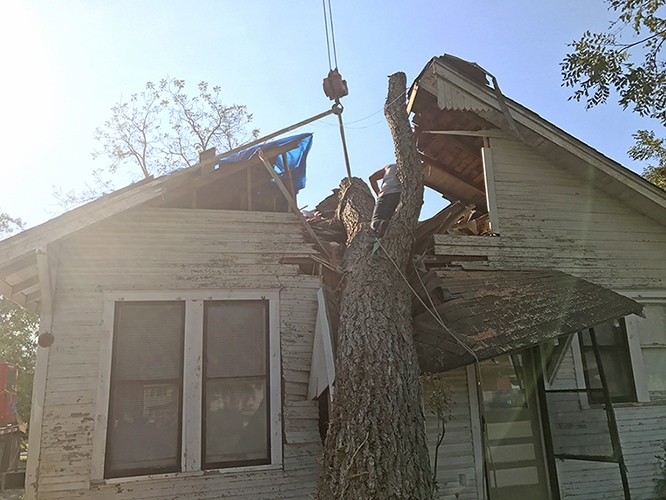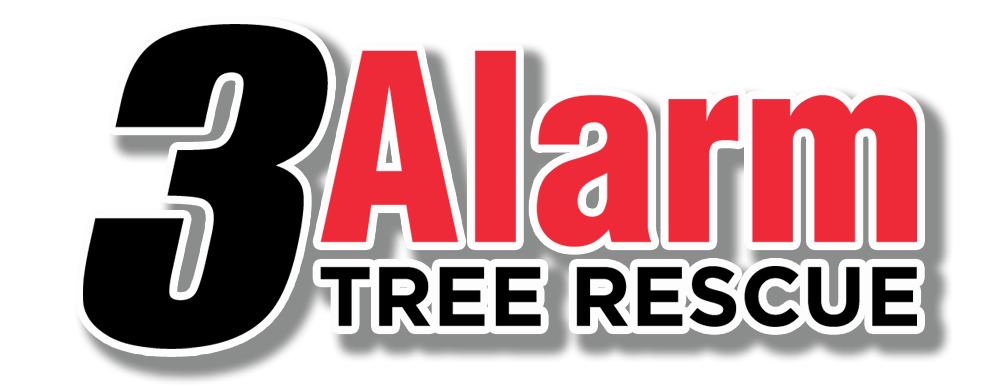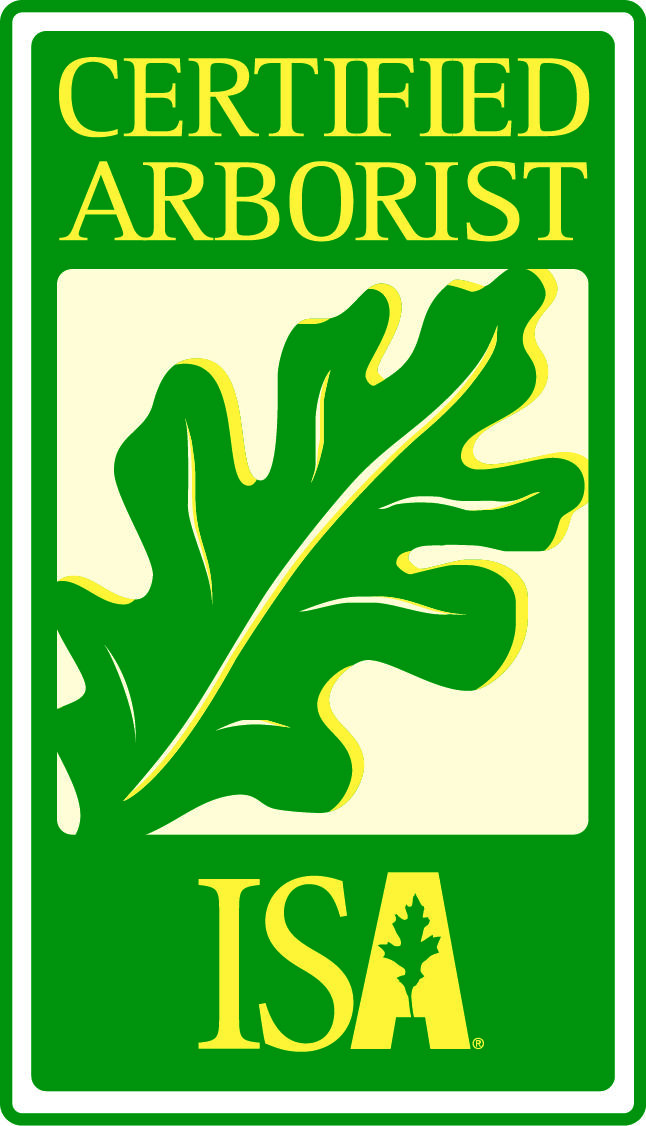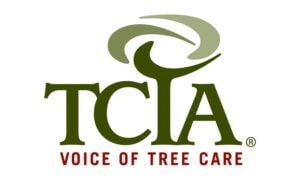When Will My Tree Fall on My House?
Should You Be Worried?
Have you ever wondered if the large trees by your house would fall on it during some wind or storm event? First, stop worrying. Most trees in residential settings are sound and have many years of healthy life before becoming a hazard to your home. However, if your tree is unsafe it could be a threat to lives and property. How does a tree become a hazard?
“Many shade and ornamental trees are damaged throughout the year by windstorms, lightning or ice and snow accumulations,” notes ISA Certified Arborist, Richard Hancock of 3 Alarm Tree Rescue. “Damage usually consists of a few broken branches. However, more severe damage – such as splitting or pulling apart of branch unions, removal of large areas of bark, twisting and splitting of the trunk or even uprooting – pose possible dangers.”

Species & Situations
A few tree species, including Chinese elm, silver maple, boxelder and various poplars, have brittle wood that is easily broken. These rapidly growing trees cause a considerable amount of damage to homes, cars, buildings and utility lines each year. Homeowners should be aware of these characteristics and avoid planting them close to potential targets. If such trees are already growing in these locations, preventive pruning, bracing or cabling may help reduce storm damage this winter. This is particularly true as the tree grows in size and the weight and surface of the leaf and branch area increases. It is important to do proper research before buying a tree, especially if you are planting it near your house. Certain trees may have a higher likelihood of falling on your house, due to the wood being weaker.
Over the years, growing trees will add more leaves, become heavier and “catch” more wind, so they are prone to increased mechanical stresses, thus increasing the chances of failure. Larger trees will also affect an increased area should they or their larger limbs fall. This means that homes, other structures and power lines that might not have been threatened a few years ago might now be under threat by a tree that has grown. Preparing trees to better withstand these natural events is necessary and should be done well in advance of storm season. To help ease these dangers, have a professional arborist from 3 Alarm Tree Rescue evaluate your trees. Doing this will help identify potential weaknesses and dangers.
Warning Signs
Look at your trees for the following warning signs:
- Dead or partially attached limbs hung up in the higher branches that could fall and cause damage or injury
- Cracked stems and branch forks that could cause catastrophic failure of a tree section
- Hollow or decayed areas on the trunk or main limbs or mushrooms growing from the bark could indicate a decayed and weakened stem
- Peeling bark or gaping wounds in the trunk also indicate structural weakness
- Fallen or uprooted trees putting pressure on other trees beneath them
- Tight, V-shaped forks, which are much more prone to failure than open U-shaped forks
- Heaving soil at the tree base is a potential indicator of an unsound root system
Remember, too, that a tree is a living thing, and its integrity and stability change over time. Don’t assume that a tree that has survived 10 severe storms will necessarily survive an eleventh.
Contact Our Trained Arborists
Our priority is protecting your property. Your family’s safety, and our workers’ safety are our main concern. Our concern shows in the safety techniques and equipment we use. This is an area that sets us apart from other companies. Our training to work safely and effectively in emergency situations, combined with our equipment, knowledge and experience will reassure you that we are professional tree experts.




